Original text by Marina Belova
I've long set my sights on mylar (wrapping film used for presents) as a possible material for machine embroidery. The manufacturers in Europe and the USA have been producing the machine embroidery variety for ages, but where I live only the wrapping film can be found, or, as a last resort, you can turn to the old kids' balloons filled with helium.
The film, of course, is not a durable material, so you hardly can use it for clothes. But it will be good for the items that don't require washing and pressing with a hot iron, for instance, bags or embroidered postcards. It is said that you cannot have the film dry-cleaned, but it can endure 10–20 washing cycles. On the other hand, this film comes in all kinds of colors and ornaments, and it also has a shine, which is its undeniable advantage.
This is a spring tree with birds that I created today, but, unfortunately, it is hard to capture that shine with my camera:
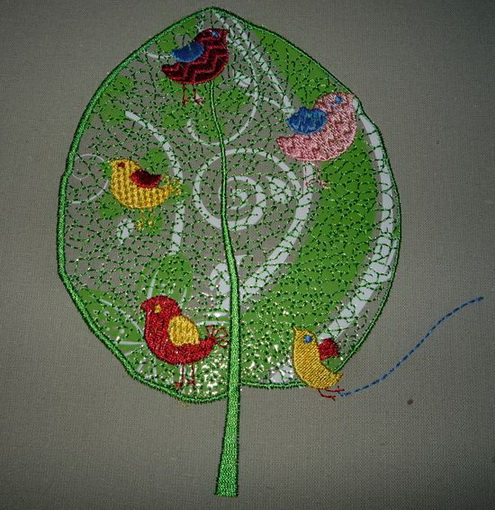
The most important thing is, this film is very easy to use. It can be used as an appliqué, topped with low-density fills, through which the shine is visible.
The design digitizing is even more simple than for the traditional patched appliqué because you don't need to do any trimming; the films tear off easily along the line of needle penetrations:
- First, create an outline where the film should be.
- Then, create the rest of the design.
Settings recommendations are very similar to the ones for machine embroidery on paper: low density, the use of motifs, removing short stitches and so on.
I'll show you how to do it, using my own attempt as an example.
I hoop the fabric together with the stabilizer:
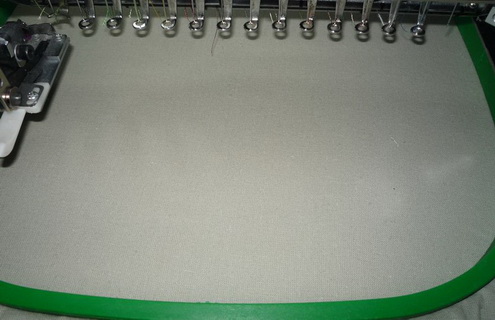
Stitch the outline:
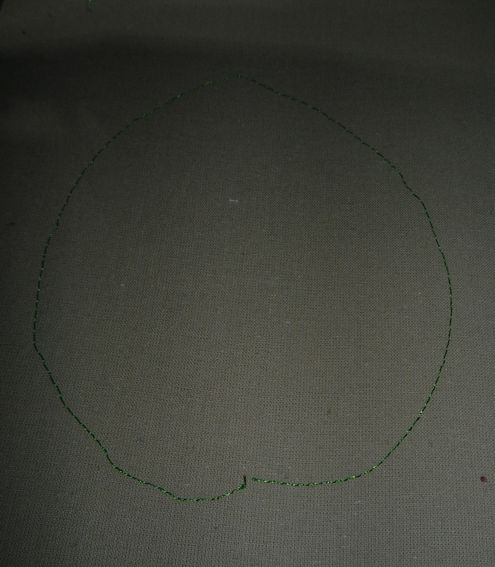
Put the film on top of it. I have sprinkled mine slightly with a temporary spray adhesive to prevent it from slipping and creasing at the very beginning:
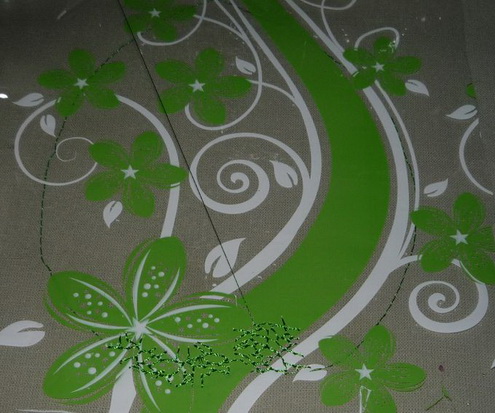
Then embroidered the entire design. The film, as I found out, can be torn off even along the running stitch line:
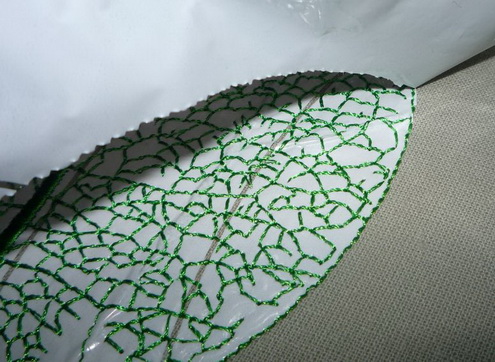
But it is better to tear it off along the satin stitch line. The rest can be removed with pincers, which is not difficult:
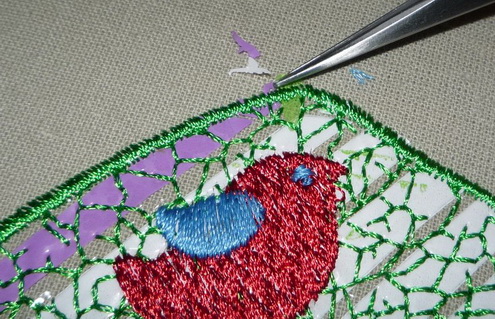
The most important thing is to keep an eye on the embroidery so that the folds on the film do not appear, otherwise, you'll get a ribbing under the fills. You cannot spot it in the photo, and that's why I don't show it, but in reality, it is very much visible.
Before my second attempt, I decided to iron my already wrinkled film to smooth it – mine is of a simple wrapping variety, remember? It turned out that you can smooth it a little. I set my iron at the most delicate regime and used a thin piece of cloth for protection. The result was splendid.
I used the most ordinary SES needle, but a thin one – #70. The threads were both rayon and polyester, the most standard #40.
Such are the secrets of working with this film.

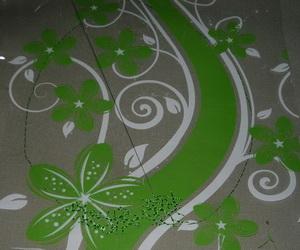
There are no reviews to display.